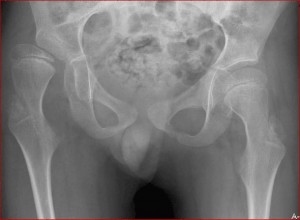Every year 120 children are diagnosed with cerebral palsy (CP) in Norway. The causes are many and complex, and there are also different methods for treating its complications. Researchers are now working on an overview of risk factors and treatment methods to improve prevention and treatment.
 PhD-candidate Areej Ibrahim Elkamil at the Department of Laboratory Medicine, Children and Women’s Health (LBK), NTNU, has looked at risk factors for CP, and how best to treat the complications connected to it.
PhD-candidate Areej Ibrahim Elkamil at the Department of Laboratory Medicine, Children and Women’s Health (LBK), NTNU, has looked at risk factors for CP, and how best to treat the complications connected to it.
Complex risk factors
Cerebral palsy (CP) |
|
“There are many risk factors around birth which could harm the child: If the mother is ill; the child is conceived through assisted fertilization; there is more than one child (e.g. twins); there are problems with the placenta; bleeding during pregnancy; etc.,” Elkamil says.
“We are pretty sure that if you combine two or more of these factors, the risk of CP increases.”
One of the results that stands out is that induced labour seems to increase the risk for CP. Elkamil therefore wants to ask medical staff and parents to think twice before inducing labour without medical cause.
“We know that induced labour saves lives if the mother is ill – it can save both mother and child. But we want doctors to have in the back of their mind that induced labour can also be associated with a risk for CP,” she explains.
We know, however, that around a quarter of children with CP do not have any known risk factors. Elkamil believes there could be genetic reasons why these children cannot cope with the impacts of birth as well as other children, and researchers have already started looking into this.
Treatment not corresponding to severity
Elkamil and the researchers at LBK also looked at the treatment options for children with CP. One of the studies looked at the use of the muscle paralysing substance botulinum neurotoxin – also known as ‘botox’.
Two thirds of children with CP are treated with botox to reduce muscle spasticity (muscle stiffness), which is a common complication in CP. Not surprisingly, the researchers found that the proportion of children receiving botox treatment correlates with the severity of CP – but only to a point.
When looking at children classified at level five, the highest severity grade, the proportion of children receiving botox treatment is lower than on level four. This is despite the fact that these children have more muscle stiffness, spasms and corresponding pain.
“Some think that if we were to treat children at level five, we would have to administer botulinum toxin everywhere. This would result in very high doses, which could lead to serious complications. We think that perhaps we should set specific goals for botulinum toxin use, and administer it in places that would ease care or reduce pain,” Elkamil says.
“Children at level five often have to be strapped to their wheelchair, and cannot move. They have problems with spams and pains which can make daily care difficult. It is worth keeping in mind that something as simple as dressing the child can be a challenge due to spasticity.”
Early screening against hip problems
One of the complications that can occur in children with more severe CP is dislocation of the hip. It can be difficult to discover this in children with high levels of muscle stiffness and spasms. The worst is that a dislocated hip can become very painful without the children being able to communicate this to their parents or carers.
Elkamil has compared the follow-up programme to prevent hip dislocation in Sweden with Norwegian practice in the years 1998-2003. In Norway there has been a tradition not to intervene early, but rather wait until it becomes unavoidable. The reasoning has been that the children are still growing and developing, and that it therefore is better to wait as long as possible to avoid further operations later.
In Sweden, on the other hand, the practice has been to screen the children from an early age and operate early to avoid complete hip dislocation.
Elkamil found that the total number of operations did not increase with early intervention. When looking at the type of operation, it turned out that Sweden had less serious operations and no operations resulting in the removal of the femur head from the thigh bone (femur).
“The hip is a ball-and-socket joint, and when the hip is dislocated over a period of time, the cartilage protecting the hip socket is damaged, something which becomes very painful. With early intervention we can keep it in place, avoiding pain and larger operations. So it pays off to begin early,” Elkamil says.
Importantly, the Norwegian practice has changed since 2003 and we now follow the same model as in Sweden.
CP registers worth their weight in gold
In her research, Elkamil has made use of data from the Norwegian CP register, one of Norway’s 19 national medical quality registers. The CP register has made it possible to identify risk factors, and it can provide an overview of treatment practice.
As more countries establish CP registers, it will also become possible to conduct larger studies giving even better data, which ultimately could lead to better prevention and treatment.
Thesis defence
Areej Ibrahim Elkamil will defend her thesis on 27. September 2012 at 12.15. There will be a lecture at 10.15.
Related publications
- The effects of multiple pre- and perinatal risk factors on the occurrence of cerebral palsy. A Norwegian register based study.
- Induction of labor and cerebral palsy: a population-based study in Norway.
- Botulinum neurotoxin treatment in children with cerebral palsy: A population-based study in Norway.
- Prevalence of hip dislocation among children with cerebral palsy in regions with and without a surveillance programme: a cross sectional study in Sweden and Norway.
